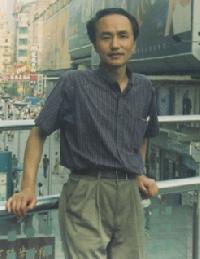Martin Jones wrote:
Hi! Maidou, you may not expect how helpful you are.
Last winter I translated a travelling guide of Qinghai from Chinese into English, due to my lack of knowlege in Tibetan buddhism, I rendered most of terms in pinyin, which is barely acceptable, though better than incorrect translation.
Now your Glossary collection should greatly help me in my future work.
Many, many, many thanks.
Hi, Martin. I am glad that you feel it might be helpful to you. One thing that needs to be clarify is that some words here are not really the standard Tibetan or Indian spelling. Here I paste some explaination of the English author on the spelling of these words:
有关书中部分术语及人名的拼写方法,在此需要做几点说明。在本书中,我使用的是藏语音译——譬如,玛姬拉尊为“Machik Labdon”,而不是Ma-gcig-lab-sgron。札西巴登为“Palden Tashi”,而不是dPal-ldan-brka-shis。对于普通读者来说,如果完全用藏语的拼写规则,会完全无法阅读,因为其中有大量不发音的辅音字母。藏学专家可以很容易地根据其发音找到正式的拼写方法,对普通读者而言则没有了解这些拼写的必要。
对于梵语,我也采取了类似的方法,去掉了变音符。同样,变音符或许在面向学者的专业文献中比较有用,但是对于没有相关知识的普通读者而言,就会太过难懂,同时也会造成视觉上的疲劳。简单地说,这就有点类似于在安徒生的童话故事里插上一大堆元音分割符,未免太过扫兴。
请注意,在藏语中,“a”属于软音,更接近于“song”(音“宋”)中的“o”,而不是“sang”(音“桑”)中的“a”。因此,藏语唐卡“tangka”的发音更类似于“tongka”(音“筒卡”)。
说到唐卡,熟悉藏语的人都知道,藏语和梵语一样,有两个“t”。大多数西方学者都倾向于把第一个写作“t”,第二个写作“th”。因此,有的读者可能会在其它关于西藏艺术的书中看到“tangka”被写作“thangka”。遗憾的是,这种拼写方法往往会让最有经验的读者也不免发生拼读错误,把“Thangka”读作“thank-a”,而不是“tong-ka”。




